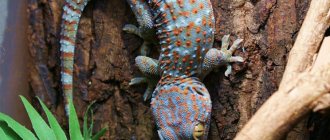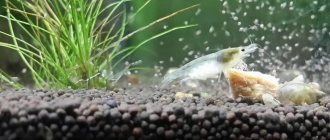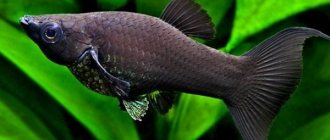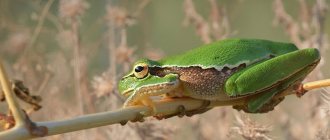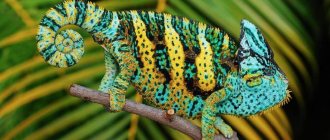These funny creatures are sometimes called water dragons or salamanders. In fact, the axolotl is the neotenic larva of some species of ambistomas (mole salamanders). The main feature of water dragons is that they reach sexual maturity without ever turning into an adult form. For such a monster to become an adult ambystoma, it needs special conditions - a decrease in water level or injections of the hormone thyroxine. However, it is the larval form that has gained particular popularity among aquarists. Mainly because of his stamina and fantastic appearance.
Small dragons live in the reservoirs of Mexico (there are especially many of them in lakes Chalco and Xochimilco). In nature, the number of these individuals has recently been rapidly declining, so now aquatic salamanders are successfully bred in captivity. Its colorful appearance ensures universal love for this little aquarium miracle.
Description
It’s not for nothing that the axolotl’s second name is the Mexican dragon: it looks like a newt with a large head and six protruding gills that stick out in different directions. The salamander has a large head, a wide smiling mouth, and tiny eyes. From the outside, he gives the impression of a cute pet animal, a “luntik” from a cartoon, who wants and is ready to hug the whole world. Looking at such a pet, your mood immediately improves. But this is a dangerous predator who is not averse to feasting on its neighbors. The advantage of the Mexican dragon is that it can regenerate body parts, so the loss of limbs is not scary and is safe for health.
The length of the axolotl salamander reaches 30–35 cm. Small individuals can be no more than 9 cm. Males are distinguished by a long tail and a rounded cloaca. Small but sharp teeth are hidden in the mouths of small predators, with which the animal deftly grabs and holds food.
Other interesting facts
- The axolotl skeleton consists of cartilage, and the skin is very thin. Therefore, you should not touch them without a significant reason, otherwise you may injure the amphibians. If you need to catch them, use a soft net or plastic container.
- The axolotl is capable of regeneration. It can regenerate paws, tail and internal organs. The process takes about 3 weeks. But despite such an amazing function, the gills, after damage, will no longer be able to regain their previous appearance. They will look like disheveled shoots.
- Axolotls in most cases are injured during contractions. Therefore, they need to be given enough food so that hungry amphibians do not encroach on their relatives.
Kinds
Color depends on the species:
- pink with black eyes;
- pinkish-white with red eyes;
- golden with golden eyes;
- gray with black eyes;
- black axolotls;
- light color with spots.
The white axolotl with red eyes is an albino. Albino axolotls are less common than other species in nature, but are actively bred for the aquarium hobby. Salamanders with golden spots are highly valued: golden spots appear on the body, which give an unusual appearance to the cute animal.
Killer whale habitats
The killer whale is a cosmopolitan species, found from Arctic to Antarctic waters, both coastal and pelagic. Only avoids areas with severe ice conditions.
The presence of several family groups of these nomadic hunters may give the false impression that their population is quite large. However, this is not the case, and killer whales are scarce everywhere.
So, in the 1970s, an employee of the Canadian Department of Fisheries and Oceans was tasked with conducting a census of the number of killer whales off Vancouver Island. After several years of research, it turned out that these animals are much smaller than previously thought. In the area of Vancouver Island, where the population was estimated at "many thousands", two communities were discovered - northern and southern, whose members did not communicate with each other in any way. The northern community included about three hundred individuals, and the southern community had even fewer – about 100. The number of each community was undermined by numerous captures in the 60s of the 20th century. When the killer whale turned from a ferocious monster into an inhabitant of aquariums, i.e. A potential source of income, the southern community proved to be the most accessible to trappers. Most of the animals now living in captivity originate from there, and the population of the southern community has never recovered.
Axolotl nutrition
Before purchasing different foods, carefully study what to feed an axolotl in captivity. Lizards should not be given animal meat, animal protein or fish food. The diet should be balanced and comply with captive feeding recommendations.
What does axolotl eat:
- Seafood Cocktail;
- earthworms;
- shrimp plankton;
- raw hake;
- cod fillet;
- pollock fillet;
- mussels;
- small live fish: guppies, zebrafish, neons;
- zooplankton;
- water beetles;
- mosquito larvae;
- amphipods;
- slugs;
- gastropods.
Lizards can be given sinking granular or tablet food for predatory fish.
Do not give a lot of food or leave food at the bottom. Rotting food releases toxins that are life-threatening to the lizard.
Gluttonous salamanders are constantly hungry, but overfeeding reduces their quality of life. After eating, an adult animal needs two to three days to digest. Without food, the Mexican water dragon can thrive for two to three weeks, but may eat body parts of its neighbors. Young individuals should be fed every day, and adults should be fed once every three days.
Laying out the soil
Choosing a substrate is an important stage in how to set up an aquarium, because a lot in the aquatic environment depends on the type of substrate. The most popular and convenient types of soil are sand or gravel, which contribute to the natural design of the pond and are easy to clean when dirty. You can buy soil in a specialized store, or get it yourself in nature. Before placing the soil for plants in the tank, the selected soil is treated by rinsing well in running water and calcining in an oven to get rid of bacteria and dirt. If the soil was purchased in a store, it must also be thoroughly washed.
Axolotl: care and maintenance
Keeping an axolotl in an aquarium can have a negative impact on the quality of life, so you need to follow the recommendations exactly and provide the salamander with proper care. Proper care means not only feeding the salamander, but also arranging the aquarium.
Choosing an aquarium
For comfortable living, lizards need a large aquarium. One animal requires 50 liters of water. If you plan to keep several individuals in one aquarium, you need a spacious aquarium of at least 100 liters. Young dragons can be kept in an aquarium with a volume of 40–100 liters. The depth of the aquarium for an axolotl should be at least 15 cm.
You need to buy additional interior items for the aquarium: driftwood, large stones, houses. But do not buy equipment with jagged or sharp edges - the animal has delicate skin, which it can accidentally injure on a sharp edge.
Water temperature
The main condition for keeping an axolotl in an aquarium is the temperature regime. The temperature should not exceed 20 degrees. When the temperature rises, the animal experiences severe anxiety and stress, which can cause sudden death. Monitor the quality - the water should not contain chlorine, the recommended acidity is 7-8 pH, and hardness is 6-16 dH.
Filtration and aeration
Warm water does not have enough oxygen, so additional equipment for aeration and filtration will be required. Experts recommend updating the water in the aquarium once a week. You can’t change all the water at once; you can replace a quarter or half of the aquarium’s volume at a time. A complete water change in the aquarium can be done every three months. A filter is necessary to clean the aquarium from contaminants. Dirt has a bad effect on health and shortens life expectancy. Take a good hairline with a slow flow - this will be ideal for the salamander.
Priming
Without soil, an aquarium dragon fish will feel uncomfortable. They need something to cling to with their tenacious paws, but regular gravel or coarse sand cannot be used. Dragons can swallow stones or large fractions of sand, which will lead to the sudden death of the individual. It is better to buy fine aquarium sand or large round pebbles. Don't forget to put several hiding places in the aquarium where axolotls will be happy to hide.
Light and vegetation
The water dragon does not need a lot of light, these animals have poor eyesight, so powerful light lamps will not be needed in the aquarium.
But you can’t leave an aquarium without plants. Buy plants that take root well in warm water: egagopril, repens, hygrophila, arrowhead, loosestrife, alternanthera rhineca, pond snail.
Compatibility: neighbors of axolotls
These amphibians are predators, and therefore few people can get along with them. If the size of the aquarium allows, you can keep a group of axolotls, however, there are some nuances here too. The fact is that cannibalism is very common among them; strong individuals often attack weak ones, biting off limbs, gills, etc. This usually happens in a cramped aquarium, especially with poor feeding. However, axolotls have an incredible ability to regenerate, and therefore, when conditions improve, they will easily regrow lost body parts.
Comparable axolotls can be kept in groups
Finding neighbors among the fish is also not easy, because most of them will either be eaten or begin to injure the amphibians themselves. Don't forget about the temperature factor - cool water is simply not suitable for most tropical fish.
In the aquarium it is necessary to create conditions that closely resemble the natural habitat of the inhabitants.
Axolotl: keeping at home with other fish
Experts recommend keeping the Mexican dragon separately from its relatives and other fish, but if you decide to breed lizards in the same aquarium, do not forget about a number of rules:
- individuals must be the same size;
- Water dragons of different ages cannot be kept in the same aquarium;
- Personal space for each animal requires at least 50 liters per adult, otherwise the animals will tear off each other’s limbs.
Adult axolotls can eat small larvae and animals. It is necessary to remember this when breeding salamanders, immediately isolating babies from the adult population.
You should also be careful with other fish and, if possible, exclude any proximity. Other predatory fish can prey on the axolotl's gills and damage them, and the nocturnal inhabitants themselves can attack other sleeping fish at night in order to feast on them.
The only possible neighbors for the dragon are goldfish. They feel good in cool water, and with proper care and organized nutrition they will not attack the salamander.
Choosing an aquarium by size
One of the main criteria for choosing a container is its size. Let's proceed from the fact that individuals are usually purchased for home keeping at the age of two to three months.
It is during this period of time that amphibian larvae can grow stronger, weak individuals die, and those capable of independent life pass into the hands of future owners.
When amphibian larvae are about two to three months old, their body size is still quite small. Usually the length of the body along with the tail reaches eight to ten centimeters from the top of the head to the very end.
Remember that your pets should not be cramped. However, you should not initially purchase a container that is too large, since it is more labor-intensive to maintain and will require greater financial costs in the future.
However, you should not purchase a small aquarium, since axolotls grow quite quickly, and by the age of one year an adult male amphibian can reach a length of 30 - 45 cm.
When purchasing a container, you should immediately answer the question: “Are you planning to breed a pair or more axolotls or will you purchase one individual for personal keeping?” Depending on this, choose the aquarium according to its dimensions:
- you are planning to breed one individual. Then you can safely choose a small twenty-liter container to start with. This is the volume of water that will be optimal for keeping a small individual until it reaches nine to twelve months. After the axolotl becomes an adult, you should choose a larger aquarium. Usually a container of 40 - 50 liters is purchased. To maintain each subsequent individual, it is necessary to increase the volume of the container by another twenty to thirty liters;
- breeding a group of individuals. Often, lovers of exotic animals, including axolotls, have a desire to start breeding larvae. For this purpose, the owners purchase both a male and a female specimen at once. The ideal option for a married couple would be to select an aquarium with a capacity of 80 - 100 liters. When a pair of amphibians has offspring, the young will be able to live with their parents for some time. However, in the future, the larvae should be separated from the adults. The removal of the larvae is simply necessary, otherwise the adults and stronger individuals will eat the small and defenseless cubs.
Surprisingly, the larval forms of Ambystoma are prone to cannibalism. When keeping pets of different age groups, the owner should take this fact into account.
It is often not always possible to transplant smaller individuals from adults in a timely manner, with subsequent preservation of the necessary conditions for life.
Therefore, some owners provide some kind of insulator in the aquarium. It is also worth placing sick individuals in it that may be attacked by stronger relatives.
Reproduction
Axolotls are unique animals that can reproduce in the larval stage. They become sexually active by the age of one year. To encourage axolotl reproduction, it is recommended to regularly change the water temperature. You can reduce the length of the day and increase the water temperature, and then carry out the reverse manipulation - this will also stimulate the fertilization of the female. Some experts recommend keeping females and males separately and placing them in a common aquarium during the breeding season.
The male releases spermatophores, which the female absorbs through the cloaca. The eggs are laid on plants. At one time, the female can lay up to 500 eggs. After laying eggs, it is recommended to move the female and male to another aquarium.
After 2-3 weeks, salamander larvae will hatch from the eggs, which look like ordinary small fish fry. The larvae should be fed with daphnia, small worms, and gill-footed crustaceans. Gradually, as they grow older, they are transferred to adult food.
After a week, the larvae grow to 1.5–2 cm, and at one and a half months their length reaches 7–11 cm. At 10 months, external gender differences appear: males become larger than females, and a swelling forms near the cloaca.
Axolotls are cute animals with a fastidious nature. If you decide to get a “Mexican dragon”, think about whether you can create the necessary comfortable conditions for it, read how to care for an axolotl. They need to be treated with care, as they have delicate skin and fragile cartilage instead of bones. They can unexpectedly bite the owner's finger, so no tenderness or hugs with the baby. The Mexican dragon will become a real decoration of the aquarium, but you need to remember that any animal in the house is a responsibility and care that only you can give.
Extraordinary water monster
From the Aztec language, the word axolotl is translated as “water dog” or “water monster.” There is nothing scary about our hero’s appearance - this salamander looks more like a small funny dragon. The coloring of cute monsters can vary from dark gray to a very light whitish shade. Albinos bred in captivity are white. There are also brown and brown color options; they are excellent for camouflage and make the water dragon almost invisible.
The axolotl is easily identified by the funny and slightly bushy appendages (three on each side) on its head. These are actually its external gills. Dragons also have small eyes and a very wide mouth, which constantly gives them a laughing, smiling appearance. They also have small teeth.
Unlike most of the inhabitants of the aquarium, nature gave the baby monsters short legs with toes (4 on the front, 5 on the back). The tail of the larvae is long and wide, helping to swim.
The usual size of an axolotl is 20-25 cm, but some specimens can reach up to 35-45 cm. Weight - 300 g. Males are usually slightly larger than females - mainly due to the length of the tail. In an aquarium, dragonets usually live up to 10 years; with very good care, they can reach a very respectable age - 15-20 years. One of the most unusual abilities of these creatures is the ability to regenerate. They can regrow not only gills or a tail, but also entire limbs.
What does he like to eat?
In its natural environment, the axolotl feeds on larvae, fry and insects that fall into the water.
They eat salamanders and small aquarium fish: guppies, zebrafish, neonfish and rasboras.
Live food includes small amphipods, daphnia, cyclops, corertra, and tadpoles. You can feed your axolotl bloodworms.
In addition to the above, the amphibian's diet can be varied by wingless insects, crickets, slugs and snails, freed from their shells.
You should know that you cannot use regular food for aquarium fish. It is forbidden to feed the axolotl and red meat to warm-blooded animals, since its digestive system does not digest this type of protein.
Key Features
The predator axolotl is motionless most of the time. He, as he does for hunters, waits for his prey: a gaping snail or a worm.
It takes 2-3 days for him to digest food.
The ability to renew himself in this way is a vital necessity for him.
Cute kids have a bad habit of biting off each other's paws. So the larvae learned to regrow lost limbs and organs.
The whole process follows the same scheme:
- the end of the stump is rounded:
- the damaged limb takes on a conical shape;
- the foot is constantly growing, a flipper is formed;
- finger rudiments are formed.
Scientists are studying this phenomenon. Perhaps, over time, the axolotl will teach people how to restore their arms and legs.
And today he often has to sacrifice himself for the sake of science. Most populations live in laboratories.



